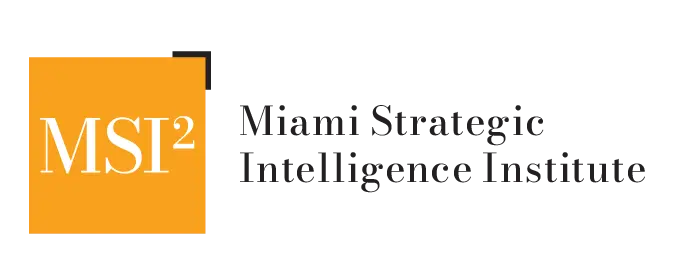09 Apr The Daily Trench in Argentina: Rising Prices, Violence, Robberies, and the Shadow of the Dollar
By,
Jesús Daniel Romero, Co-Founder and Senior Fellow, MSI2
In April 2025, Argentines face a daily life marked by a complex mix of economic and social challenges. While President Javier Milei shuttles between Buenos Aires and Mar-a-Lago, bolstering his international image, the people grapple with prices creeping upward again—especially for meat and food—an increase in violence and robberies, and the constant uncertainty surrounding the dollar.
This reality, far from the global spotlight, reflects the tensions of a country in transition, where economic policies promise long-term stability, but the present remains a battlefield for many.
Prices Creeping Upward Again
Inflation has been a constant in Argentina for decades. Though Milei’s government celebrates progress, it remains a daily burden for the population. In 2024, inflation closed at an annual rate of 117.8%, a significant drop from 211.4% in 2023 (El País, 2025a). For 2025, market projections (REM from the BCRA) estimate an annual rate of 23-31% (Central Bank of the Argentine Republic [BCRA], 2025), a level that, while lower, continues to erode purchasing power. In the Greater Buenos Aires area, where poverty exceeds 60%, the prices of food and basic services like gas and electricity (which rose 5.3% in December 2024) hit hard. “I buy less and less with the same money” is a common refrain among residents of neighborhoods like La Matanza.
Violence and Robberies: Everyday Insecurity
Alongside the economic crisis, insecurity has become a central concern. In Greater Buenos Aires, violent robberies have surged, with an 18.3% increase in criminal cases between 2022 and 2023, according to the National Criminal Information System (Ministry of Security, 2023). Cases like retirees being robbed by “motochorros” (motorcycle thieves), with over 7,000 daily incidents reported in the Buenos Aires Metropolitan Area (AMBA) in 2024 (iProfesional, 2025), highlight the severity of the issue. In January 2025, local media spotlighted robberies involving minors, a reflection of how inequality and lack of opportunities fuel crime. While homicides in Rosario dropped 65.5% in 2024 thanks to federal operations, interpersonal violence continues to rise in other urban areas.
The Dollar: A Barometer of Confidence
The dollar, both official and parallel (“blue”), remains the pulse of Argentina’s economy. In March 2025, the official exchange rate hovers around $1,069 per dollar, with a 1% monthly “crawling peg” (BCRA, 2025). However, the blue dollar has shown volatility, surpassing $1,300 during tense moments (La Nación, 2025). This gap reflects distrust in the peso and exchange controls, which Milei promises to ease. For Argentines, the dollar is more than a currency: it’s a refuge against inflation and an indicator of stability. “If the dollar rises, everything rises,” says a shopkeeper from La Plata, summing up a dynamic that affects everything from the price of bread to rent.

The Contrast: Policies vs. Reality
Milei’s government is betting on fiscal discipline and reduced public spending to stabilize the economy. International reserves are declining, and the possibility of a devaluation or more IMF debt looms as a risk (International Monetary Fund [IMF], 2025a). Yet, while the president touts a projected GDP growth of 5-6% in 2025 (IMF, 2025b), the “real economy” isn’t taking off for everyone. Consumption has plummeted, and GDP fell 3.4% in the first half of 2024 (Reuters, 2025). On the streets, people see more individuals sleeping in public spaces and businesses shuttering, as social media users note, contrasting with official optimism.
Tariffs: The Other Side of Household Economics
Parallel to macroeconomics and growth indices, tariff negotiations have become a central issue in Argentines’ daily lives. The government seeks to align the prices of public services like electricity, gas, transportation, and water after years of cross-subsidies. However, this strategy—though necessary to correct fiscal distortions—has immediate effects on household budgets.
A tariff hike directly impacts family finances, especially in middle- and lower-income sectors. In areas like Greater Buenos Aires, paying an electricity bill or loading a SUBE transit card can mean choosing between services and food. Moreover, tariff adjustments drive inflation through a cascading effect on other goods and services. When increases aren’t paired with efficient social segmentation, they spark discontent, protests, and a sense of injustice.
A Punishment Vote on the Horizon?
Daily discontent is beginning to seep into the political sphere. Despite Milei’s libertarian base and his narrative of “emerging from hell,” many feel the sacrifices aren’t equitably shared. Recent polls show a decline in the president’s approval rating and early signs of a potential political reconfiguration.
On social media, everyday complaints mix with calls for electoral action: “They told us to hold on, but we can’t make it to the end of the month,” a recurring sentiment in posts hinting at a wave of punishment voting. While it’s too early to predict future election outcomes, the social mood in 2025 is starting to tip the scales. The daily trench could become the prelude to an electoral shift if reforms fail to improve tangible living conditions.
Recommendations
– Promote Financial Education: It’s essential for the population to receive education on financial management to better handle resources during inflation and economic crises.
– Social Inclusion Programs: The government should implement programs addressing inequality and offering job opportunities to the most vulnerable sectors.
– Structural Reforms: Strengthening confidence in the peso and reducing dollar dependency are critical.
– Improve Security: Increasing police presence in high-risk areas and fostering collaboration between communities and security forces could help reduce violence and robberies.
Conclusion
Argentines are caught between hope for a better future and the struggles of the present. Inflation, though slowing, remains high by global standards; violence reflects a deep social crisis; and the dollar persists as a symbol of uncertainty. Milei insists that “emerging from hell” is a work in progress, but for many—like retirees protesting outside Congress or families stretching every peso—relief feels distant. In this 2025, Argentina is a laboratory of ambitious policies and a test of resilience for its people, who continue seeking balance amid chaos. Meanwhile, the prospect of a punishment vote looms as the next chapter in this unfolding story.
References
– Central Bank of the Argentine Republic. (2025). Market Expectations Survey (REM) – March 2025. https://www.bcra.gob.ar/PoliticaMonetaria/Encuesta_expectativas.asp
– El País. (2025, January 14). Argentina closes 2024 with annual inflation of 118%. https://elpais.com/argentina/2025-01-14/argentina-cierra-2024-con-una-inflacion-anual-del-118-tras-reducirla-un-80.html
– International Monetary Fund. (2025a). Argentina and the IMF. https://www.imf.org/en/Countries/ARG
– International Monetary Fund. (2025b). World Economic Outlook, January 2025. https://www.imf.org/es/Publications/WEO/Issues/2025/01/17/world-economic-outlook-update-january-2025
– iProfesional. (2025, January 23). Alarming insecurity: 7,200 daily robberies and rising squatting in Buenos Aires. https://www.iprofesional.com/actualidad/421294-inseguridad-alarmante-7200-robos-diarios-y-aumento-de-usurpaciones-en-buenos-aires
– La Nación. (2025, March 26). Dollar today: The blue surpassed $1,300. https://www.lanacion.com.ar/economia/dolar/dolar-hoy-suben-los-financieros-y-tocan-su-valor-mas-alto-desde-agosto-pasado-nid26032025/
– Ministry of Security of the Nation. (2023). Criminal statistics. https://www.argentina.gob.ar/seguridad/estadisticascriminales- Reuters. (2025, April 1). Financial markets open April full of skepticism. https://www.reuters.com/latam/negocio/2CERUH2KCJNWPMBDZYENOP227I-2025-04-01/
